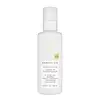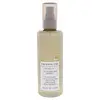What's inside
What's inside
 Benefits
Benefits

 Concerns
Concerns

 Ingredients Side-by-side
Ingredients Side-by-side

Water
Skin ConditioningC11-15 Pareth-12
EmulsifyingParfum
MaskingAlgin
MaskingChitosan
Carrageenan
Coco-Glucoside
CleansingHydrolyzed Keratin
HumectantPanthenol
Skin ConditioningSalvia Hispanica Seed Oil
MoisturisingSargassum Filipendula Extract
Skin ProtectingHypnea Musciformis Extract
Skin ProtectingGelidiella Acerosa Extract
Skin ProtectingLitchi Chinensis Pericarp Extract
Skin ConditioningCetearamidoethyldiethonium Succinoyl Hydrolyzed Pea Protein
CleansingBehentrimonium Methosulfate
Cetrimonium Chloride
AntimicrobialAmodimethicone
Caprylic/Capric Triglyceride
MaskingCetearyl Alcohol
EmollientTrideceth-12
EmulsifyingQuaternium-80
Glycerin
HumectantSorbitol
HumectantXanthan Gum
EmulsifyingCitric Acid
BufferingPropylene Glycol
HumectantPotassium Sorbate
PreservativePhenoxyethanol
PreservativeWater, C11-15 Pareth-12, Parfum, Algin, Chitosan, Carrageenan, Coco-Glucoside, Hydrolyzed Keratin, Panthenol, Salvia Hispanica Seed Oil, Sargassum Filipendula Extract, Hypnea Musciformis Extract, Gelidiella Acerosa Extract, Litchi Chinensis Pericarp Extract, Cetearamidoethyldiethonium Succinoyl Hydrolyzed Pea Protein, Behentrimonium Methosulfate, Cetrimonium Chloride, Amodimethicone, Caprylic/Capric Triglyceride, Cetearyl Alcohol, Trideceth-12, Quaternium-80, Glycerin, Sorbitol, Xanthan Gum, Citric Acid, Propylene Glycol, Potassium Sorbate, Phenoxyethanol
Alcohol Denat.
AntimicrobialWater
Skin ConditioningVp/Va Copolymer
Isopropyl Alcohol
SolventParfum
MaskingPolysorbate 20
EmulsifyingAlgin
MaskingCarrageenan
Chitosan
Coco-Glucoside
CleansingLitchi Chinensis Pericarp Extract
Skin ConditioningSalvia Hispanica Seed Oil
MoisturisingCetearamidoethyldiethonium Succinoyl Hydrolyzed Pea Protein
CleansingHydrolyzed Keratin
HumectantHypnea Musciformis Extract
Skin ProtectingSargassum Filipendula Extract
Skin ProtectingGelidiella Acerosa Extract
Skin ProtectingCetrimonium Chloride
AntimicrobialPolyquaternium-11
PPG-12-PEG-65 Lanolin Oil
EmollientXanthan Gum
EmulsifyingC11-15 Pareth-7
EmulsifyingC12-16 Pareth-9
EmulsifyingTrideceth-12
EmulsifyingGlycerin
HumectantTrimethylsiloxyamodimethicone
Sorbitol
HumectantCaprylic/Capric Triglyceride
MaskingAlcohol Denat., Water, Vp/Va Copolymer, Isopropyl Alcohol, Parfum, Polysorbate 20, Algin, Carrageenan, Chitosan, Coco-Glucoside, Litchi Chinensis Pericarp Extract, Salvia Hispanica Seed Oil, Cetearamidoethyldiethonium Succinoyl Hydrolyzed Pea Protein, Hydrolyzed Keratin, Hypnea Musciformis Extract, Sargassum Filipendula Extract, Gelidiella Acerosa Extract, Cetrimonium Chloride, Polyquaternium-11, PPG-12-PEG-65 Lanolin Oil, Xanthan Gum, C11-15 Pareth-7, C12-16 Pareth-9, Trideceth-12, Glycerin, Trimethylsiloxyamodimethicone, Sorbitol, Caprylic/Capric Triglyceride
 Reviews
Reviews

Ingredients Explained
These ingredients are found in both products.
Ingredients higher up in an ingredient list are typically present in a larger amount.
Algin is brown algae. Algae is an informal term for a group of aquatic organisms that can photosynthesize. It is estimated there are at least 30,000 types of Algae.
Algae contains antioxidants. Antioxidants help fight free-radicals. Free-radicals are molecules that may damage your skin cells, such as pollution.
This ingredient is an emollient, solvent, and texture enhancer. It is considered a skin-softener by helping the skin prevent moisture loss.
It helps thicken a product's formula and makes it easier to spread by dissolving clumping compounds.
Caprylic Triglyceride is made by combining glycerin with coconut oil, forming a clear liquid.
While there is an assumption Caprylic Triglyceride can clog pores due to it being derived from coconut oil, there is no research supporting this.
Learn more about Caprylic/Capric TriglycerideCarrageenan comes from red seaweed or algae. It is made up of polysaccharides and a highly flexible compound. Red algae cell walls are rich in carrageenan.
In cosmetics, it helps to thicken the texture. Studies show carrageenan extracted from red algae possess antioxidant properties. Components found in carrageenan include: lipids, fatty acids, Vitamin E, proteins, and several amino acids.
Learn more about different types of algae.
Carrageenan is also commonly used in medicine and food. It is a vegan alternative to animal-based gelatin.
Learn more about CarrageenanWe don't have a description for Cetearamidoethyldiethonium Succinoyl Hydrolyzed Pea Protein yet.
This ingredient is a preservative, antimicrobial, and emulsifier. It is often used in cosmetics for its ability to cleanse, condition, and reduce static.
Cetrimonium chloride is a quaternary ammonium salt, meaning it has a water-soluble structure.
We don't have a description for Chitosan yet.
Coco-Glucoside is a surfactant, or a cleansing ingredient. It is made from glucose and coconut oil.
Surfactants help gather dirt, oil, and other pollutants from your skin to be rinsed away.
This ingredient is considered gentle and non-comedogenic. However, it may still be irritating for some.
Learn more about Coco-GlucosideWe don't have a description for Gelidiella Acerosa Extract yet.
Glycerin is already naturally found in your skin. It helps moisturize and protect your skin.
A study from 2016 found glycerin to be more effective as a humectant than AHAs and hyaluronic acid.
As a humectant, it helps the skin stay hydrated by pulling moisture to your skin. The low molecular weight of glycerin allows it to pull moisture into the deeper layers of your skin.
Hydrated skin improves your skin barrier; Your skin barrier helps protect against irritants and bacteria.
Glycerin has also been found to have antimicrobial and antiviral properties. Due to these properties, glycerin is often used in wound and burn treatments.
In cosmetics, glycerin is usually derived from plants such as soybean or palm. However, it can also be sourced from animals, such as tallow or animal fat.
This ingredient is organic, colorless, odorless, and non-toxic.
Glycerin is the name for this ingredient in American English. British English uses Glycerol/Glycerine.
Learn more about GlycerinHydrolyzed Keratin is derived from keratin. Keratin is a large protein that is naturally found in our hair and skin.
Studies show keratin is able to seal broken hair cuticles, helping to prevent split ends and breakage.
As a humectant, hydrolyzed keratin helps draw moisture from the air to your hair and skin. This helps keep your skin and hair hydrated.
Learn more about Hydrolyzed KeratinHypnea Musciformis Extract comes from the red algae called Hypnea musciformis. Hypnea Musciformis is commonly found in the Atlantic, Pacific, and Indian Oceans.
The cell walls of Hypnea Musciformis is rich in carrageenan.
Hypnea Musciformis Extract contains vitamins A, C, and E. It also has calcium, magnesium, sodium, potassium, and iron.
Learn more about Hypnea Musciformis ExtractWe don't have a description for Litchi Chinensis Pericarp Extract yet.
Parfum is a catch-all term for an ingredient or more that is used to give a scent to products.
Also called "fragrance", this ingredient can be a blend of hundreds of chemicals or plant oils. This means every product with "fragrance" or "parfum" in the ingredients list is a different mixture.
For instance, Habanolide is a proprietary trade name for a specific aroma chemical. When used as a fragrance ingredient in cosmetics, most aroma chemicals fall under the broad labeling category of “FRAGRANCE” or “PARFUM” according to EU and US regulations.
The term 'parfum' or 'fragrance' is not regulated in many countries. In many cases, it is up to the brand to define this term.
For instance, many brands choose to label themselves as "fragrance-free" because they are not using synthetic fragrances. However, their products may still contain ingredients such as essential oils that are considered a fragrance by INCI standards.
One example is Calendula flower extract. Calendula is an essential oil that still imparts a scent or 'fragrance'.
Depending on the blend, the ingredients in the mixture can cause allergies and sensitivities on the skin. Some ingredients that are known EU allergens include linalool and citronellol.
Parfum can also be used to mask or cover an unpleasant scent.
The bottom line is: not all fragrances/parfum/ingredients are created equally. If you are worried about fragrances, we recommend taking a closer look at an ingredient. And of course, we always recommend speaking with a professional.
Learn more about ParfumSalvia Hispanica Seed Oil is an oil and isn't fungal acne safe.
We don't have a description for Sargassum Filipendula Extract yet.
Sorbitol is a sugar alcohol. It is a hydrating and moisturizing agent created from the reduction process of glucose.
Most sorbitol is usually made from potato starch. It is also found in fruits such as apples and pears.
As a humectant, Sorbitol helps draw water to the skin. This helps keep the skin hydrated. Sorbitol also helps create a thicker texture in products. You might find sorbitol in your toothpaste and other gels.
It is a non-irritating ingredient that is great for those with dry skin.
Sorbitol is a prebiotic. It helps promote the growth of healthy bacteria on your skin. The bacteria on your skin form a microbiome. This microbiome helps protect your skin from infection and harmful bacteria.
Learn more about SorbitolWe don't have a description for Trideceth-12 yet.
Water. It's the most common cosmetic ingredient of all. You'll usually see it at the top of ingredient lists, meaning that it makes up the largest part of the product.
So why is it so popular? Water most often acts as a solvent - this means that it helps dissolve other ingredients into the formulation.
You'll also recognize water as that liquid we all need to stay alive. If you see this, drink a glass of water. Stay hydrated!
Learn more about WaterXanthan gum is used as a stabilizer and thickener within cosmetic products. It helps give products a sticky, thick feeling - preventing them from being too runny.
On the technical side of things, xanthan gum is a polysaccharide - a combination consisting of multiple sugar molecules bonded together.
Xanthan gum is a pretty common and great ingredient. It is a natural, non-toxic, non-irritating ingredient that is also commonly used in food products.
Learn more about Xanthan Gum